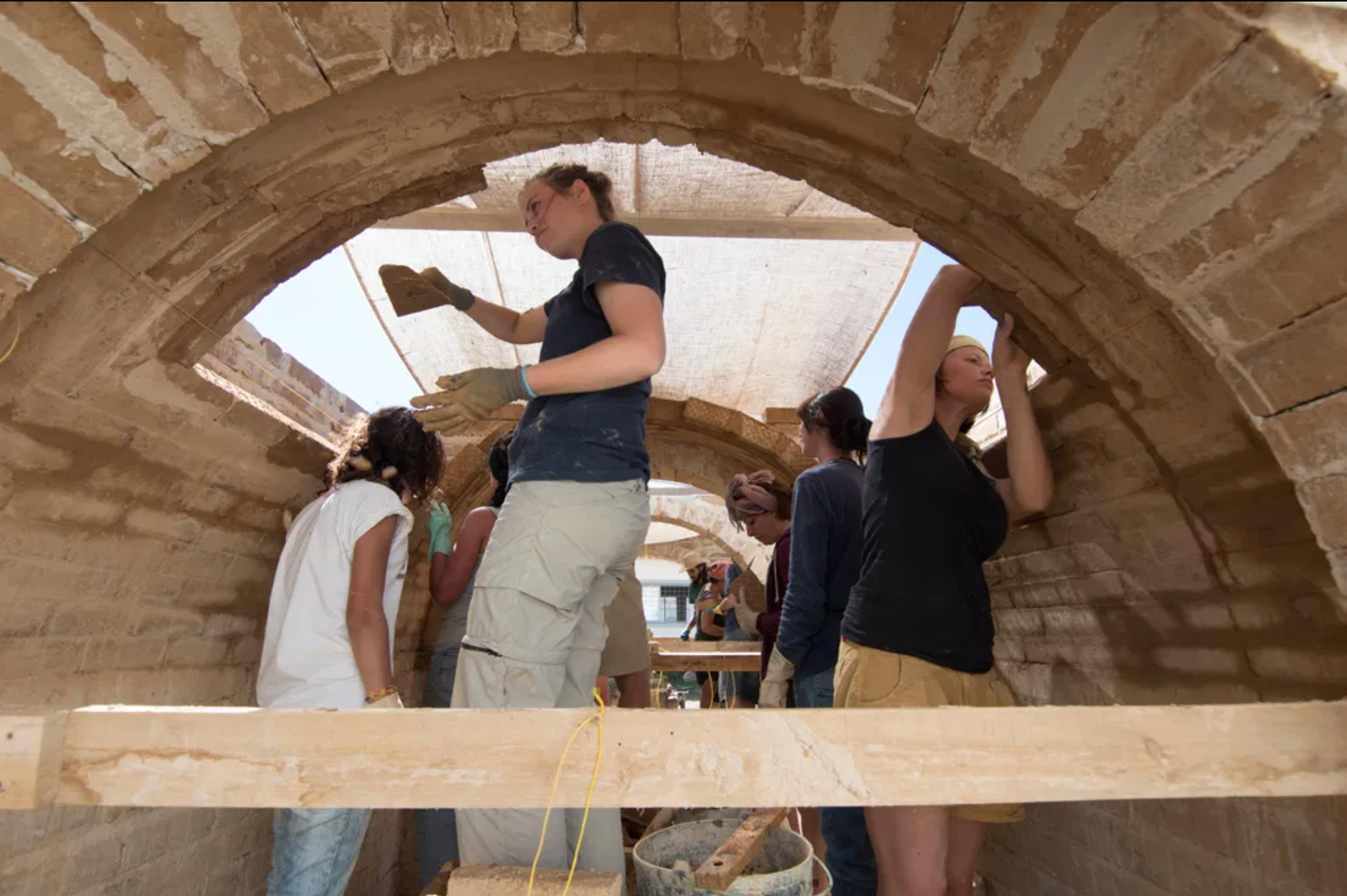Natural materials and circular design
BIØN is a network of organisations active in low-impact building techniques. We aim to share knowledge, practices and experiences to contribute to the built environment and our communities. Listen in to our diverse European network when we share our perspectives on building with natural materials, creating circular designs and working closely with the local communities.
Building with Poured Earth
We explored Poured Earth mixtures, innovative formwork, different patterns and imprints, building large prototypes, and finishing by building a 1:1 wall. Check out all our tutorial videos on poured earth.
Openstudio packing up
The exhibition on the Bi0n network is coming to an end!
Thank you all for contributing your work and building new practices. We will now move out of Open studio at Färgfabriken, very satisfied with having shared our work in the Stockholm area. Thank you all!
Future planning for circular building
All partners gathered in Stockholm for an intense work session on future plans for the network. We summarised the learnings from the partners and reflected on improvements to strengthen circular building practices all across Europe.
Sharing is caring!
On Friday 17th June 2022, AES Studio’s Anna Sundman and Emily Aquilina hosted the international Conference ‘Down to Earth’ at Färgfabriken in Stockholm, Sweden. The event focused on the current practice and future possibilities for sustainability in the architectural and construction industries. Gaining insights into the practical knowledge, built work and natural/circular material innovations of BIØN, the Building Impact Zero Network, produced over a six-year European funded project.
BASEhabitat - Lecture Series
BASEhabitat invited Tânia Teixeira to speak at a theory lecture for the University of Linz under the title Working in Networks - BIØN Building Impact Zero Network.
Down to Earth
Building Impact Zero Network finishes 6 years of experimental building with circular materials, and now we want to share it with you! In a full day conference we will share our practical explorations in biological- and low-impact building techniques and all the surrounding knowledge of people-led movements, cooperative strength and the latest on earth building research
Save the date!
We are happy to announce to all friends of Bi0n that we now have set the date for the conference in Sweden. We will gather all partners and the knowledge from our 6 years of experimental building! So save the date and join us in Stockholm.
A Wall in Poured Earth
A first wall was raised with the poured earth technique, it is one of the first large scale constructions with this technique in the Iberian Peninsula.
Building Inovative Prototypes
After a first week of intense experimentation the groups were ready to start designing their own mixes with three different soils and experiment with formwork.
Exploring Poured Earth Technique in Montemor-o-Novo
On the beginning of October we finally gathered 11 participants from different countries at the Oficinas da Ceramica e da Terra in Montemor-o-Novo, ready to explore poured earth knowledge along the next four weeks.
New workshop in Portugal in October
Exploring this innovative technique that allows a building site to be fast and similar to a conventional one is the aim of this workshop.
Poured earth: an alternative to cement concrete ?
There is an emergency in finding an alternative to cement concrete and one of the solutions may be just under our feet: earth material! Even if it's compressive strength isn't equivalent to concrete's, in a lot of cases it can be enough and thus represent a real alternative.
#Ø LearnBIØN Exhibition is on the road
After the first exhibition in Montemor-o-Novo, it follows to Caceres at Colegio Oficial de Aparejadores e Architectos Tecnicos de Caceres from November 7th till the 23rd.
It all started with a preview at Lavadouros on the 18th August and the official exhibition at the Montemor-o-Novo Municipal Gallery, happening from September 8th until October 3rd.
Guide – Design and Build with Compressed Earth Blocks
Design and Build with Compressed Earth Blocks, a 4 week building course, in Montemor-o-Novo, Portugal. During the workshop we built a prototype for artists in residence at Oficinas da Cerâmica e da Terra, a research department from Oficinas do Convento ONG.
Apply to the last LearnBIØN workshop and final reflection
The techniques that will be the main vehicle for this workshop will be defined along with the design to be co-created by all the participants in the beginning of the week.
We will concentrate on some of the techniques shared abroad during the LearnBIØN program, so skills can be more easily shared with ones getting in contact with them for the first time and improved by the ones who have experienced them.
Timber doors with local wood
To use national pinewood turned out to be more of a challenge than we first thought, as its quality is much lower than the expected and not at all in line with its price. Of course, the design of the doors, following the geometry of the inner arches and therefore with a quarter circle part, was already a big challenge for newbies!
Course Process Exhibition on site
Provar a Terra is an event that gathers people every year around the table, at Oficinas da Cerâmica e da Terra, Montemor-o-Novo. In this event there are several exhibitions about the works, courses and residences done during the last year.
Learning about vaults on the fourth week
The last week of the course has arrived. With it comes a central part of the learning process, learning the secrets behind building a vault. To help us sharing this knowledge we received the architect Miguel Rocha from CEDAC Terra that counts with numerous experiences with arches and vaults in Portugal and Spain.
Starting the Arches on the third week
During the third week of the course Design and Build with CEB the masonry with 1 and 1/2 brick was continued until arriving to 140cm. This was the starting point of our arches with 170cm diameter. The centering was made by a local carpenter and is a contemporary reinterpretation of the traditional ones, instead massive wood, oriented strand boards (OSB) were used to shape the arches form.





















